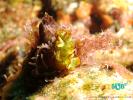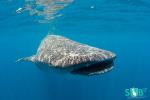 Advice on Scuba Diving in Tobago, Trinidad and Tobago
Advice on Scuba Diving in Tobago, Trinidad and Tobago
Part 1: Overview of Scuba Diving in Tobago, (Trinidad and Tobago)
Tobago is the smaller sister island to Trinidad; making up the Republic of Trinidad and Tobago. Grenada lies to the north, with Trinidad and Venezuela the closest in the southwest. Scarborough is the capital of the island and a Mecca for divers, hikers, and bird watchers. The multi-ethnic population is mainly of African and East Indian descent. Tobago is noted as one of the fastest growing regions in the Caribbean.
Popular with both overseas visitors and Trinidadians, the island enjoys a tropical climate with two distinct seasons: the dry season, between December and June, and the wet season, between July and November. Daytime air temperatures range from 28-32 Celsius, and the water temperature is comfortable when wearing a 3mm long suit - sitting between 27-29 Celsius. Luckily, Trinidad and Tobago fall outside the Caribbean hurricane belt, making this a year-round holiday destination and a safe haven for sailors.
Known for its amazing scuba diving, Tobago also offers plentiful land activities. The lush rainforest and mountains provide countless hiking trails along the central Main Ridge, the oldest forest reserve in the Western Hemisphere. The guides are very knowledgeable about the island, and they will show you beautiful waterfalls along the forest trails.
Tobago has a fantastic biodiversity, and discovering the magnificent flora and fauna is a real highlight. Rare and exotic birds make this island a bird watchers’ heaven, and there are important sea-bird nesting sites on Little Tobago and St. Giles Island.
More than 17 stunning beaches circle the island. Pristine white sand bays line the Caribbean side, whilst volcanic black sand beaches populate the Atlantic coast. Beautiful Pirate's Bay is tucked away, just outside of Charlotteville in the northeast. Robinson Crusoe was filmed here in the 50's, and it is the quintessential desert island beach to visit. Mount Irvine Bay, in the southwest, is another popular beach to snorkel, swim, and surf - boat tours are available from here too.
Fishing, sailing, and other water sports offer holidaymakers a varied choice of activities, and the scuba diving and snorkelling is exceptionally good around the island. Tobago is situated in the perfect position – where the Caribbean Sea and the Atlantic Sea join together, creating an extremely diverse ecosystem of coral reefs and marine life. These nutrient-rich waters also entice larger pelagic species to visit!
Part 2: Dive Sites, Marine Life & Environment in Tobago, (Trinidad and Tobago)
Tobago has very healthy coral reefs and an extraordinary diversity of marine life. For this reason, it is one of the best, unrivalled dive destinations in the Caribbean region. From pelagic fish to critters - Tobago always astounds, and experienced Caribbean divers will thoroughly enjoy this unspoiled oasis of abundant aquatic life. Divers are frequently treated to hammerhead and manta encounters from April-June, and large schools of fish are common. Tarpon, lobsters, eels, nurse sharks, and turtles are all regular visitors. Don't be distracted by all the big stuff, as the muck diving is a delight too. From rare giraffe garden eels to black brotula and nudibranchs, the critters are out in force.
Known as the “Drift Diving Capital of the Caribbean”, strong currents (especially on the Atlantic side) sweep past the island, making the diving sometimes challenging, but always exciting. Divers should carry a personal DSMB and audible signaling device for extra safety precautions. Visibility can vary depending on season and location. The Atlantic dive sites average 80ft, although sea and weather conditions will also dictate the visibility along the coastline. The Orinoco River is responsible for the nutrient-rich water that attracts all the amazing life; however, it does turn the water a glorious green with a distinct thermocline. The Caribbean coast is less affected and visibility ranges between 70-100ft.
The Sisters is a dramatic dive, not for the faint-hearted. Located on the northwest coast, this collection of five pinnacles burst up from the sea floor at 190ft (60m) to within 50ft (15m) of the surface. This is the place to see larger pelagic life such as hammerheads and manta; November to February is said to be the best time for them to show up. The pinnacles are covered in huge sponges, swaying deep-water fans, and bright corals. Schooling chromis dance around the structures and barracuda prowl the blue.
MV Maverick is the purpose-sunk wreck of the old Trinidad-Tobago car ferry. Sitting on a sandy bottom at 100ft (30m), she reaches 60ft (18m) at her shallowest point. Schooling fish congregate around her impressive bulk, and she is well decorated by corals and sponges. Interesting critters are found on and around the wreck, and divers can explore the open hold.
Japanese Gardens is a spectacular dive site where divers first drift along a sloping coral section in 20-60ft (6-18m) of water. A variety of colorful sponges and sea whips add vibrancy to the reef. Divers are shot through a rock corridor called "Kamikaze Cut" at an amazing pace, to be spat out into a calmer area to catch their breath. Thrilling for all levels of diver!
Mount Irvine Wall is a superb macro dive, full of interesting critters such as nudibranchs and seahorses. The shallow depth of 50ft (15m) allows divers plenty of time to explore and take photos. Turtles and spotted eaglerays are also frequent visitors to this delightful site.
Part 3: Dive Shops, Airports & Logistics of Diving in Tobago, (Trinidad and Tobago)
The Association of Tobago Dive Operators (ATDO) is the regulatory body that has laid out specific standards for the comfort and safety of divers on Tobago. Some of the main standards include having a dive instructor on staff full-time; oxygen, first aid kits, and radios on board dive boats; an SMB provided for all divers; and, dive guide escorts with all dives, with a surface marker buoy.
In addition to the full spectrum of PADI courses and programs offered by all members of the ATDO, courses from other certifying agencies - such as BSAC and NAUI - are available. Snorkel/scuba equipment rental and nitrox is readily available. The Roxborough Hyperbaric Facility is housed at the Roxborough Medical Clinic on Tobago.
The 10 registered dive centers on Tobago are located on the north end of the island around Speyside, or in the south at Crown Point. There is just one operator along the west coast at Pigeon Point.
R and Sea Divers are based at Toucan Inn, Crown Point. A PADI Dive Resort and member of ATDO, this friendly dive center offers a high level of service and professionalism. Owner-operators Tracy, John, and Wendy have a lovely team of experienced instructors and divemasters who offer PADI certification courses, as well as a wide range of PADI Specialities such as Drift Diving and Enriched Air Nitrox. Daily guided diving trips or snorkelling is available on their custom dive boat. Night diving and Speyside dive trips can be arranged.
Tobago Dive Experience, at Manta Lodge, is a PADI 5 Star IDC Dive Resort and member of ATDO. Owner-operator Sean Robinson has been diving the waters around Tobago since 1984, and has an incomparable wealth of knowledge about the underwater world in this area. The team offers PADI, NAUI, SSI, and BSAC certification courses. Their daily-guided diving boat trips visit over 40 sites around the north end of the island, although southern dive trips can be arranged.
Tobago is accessible by air or sea. British Airways, Virgin Atlantic, Condor, Monarch, and Caribbean Airlines all fly into A.N.R. Robinson International Airport (TAB), located 11km outside of Scarborough. The inter-island ferry departs from Port of Spain, in Trinidad, and berths in Crown Point, on Tobago. The trip takes around 2 1/2 hours and the ferry carries both passengers and vehicles.
Once on the island, visitors can hire a vehicle or use one of the many taxi or tour companies available. The infrastructure and roads are generally in good condition throughout the island, but use caution when driving in the mountainous or rural regions.
---- Book Your Diving ----
Fill in the Form Below.
Our hand picked regional partners will deliver no obligation quotes.

Tweets by @DiveAdvisorApp
Top Dive Shops
Top Dive Sites
Reviews
Dive Types & Activities
- Wreck Dive
- Training
- Reef Dive
- Underwater Photo & Video
- Boat Dive
- Drift Dive
- Multi-Level




